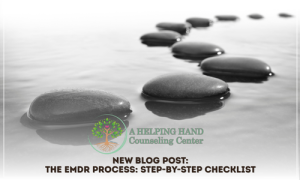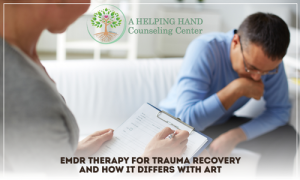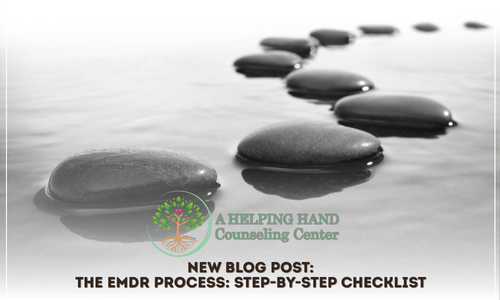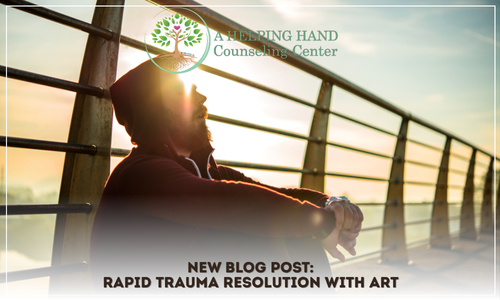
Accelerated Resolution Therapy (ART): Rapid Trauma Resolution Without Retelling the Pain
Accelerated Resolution Therapy (ART) is a trauma-focused treatment that helps people heal faster by using a combination of guided imagery, eye movements, and memory reconsolidation. Unlike traditional trauma therapies, ART does not require repeatedly describing the traumatic event, which makes it ideal for individuals who struggle to revisit painful experiences verbally.
At A Helping Hand Counseling Center, trained clinicians use ART to treat PTSD, anxiety, panic, depression, traumatic grief, phobias, and emotional wounds that interrupt daily life. This guide explains how ART works, who benefits most, what a session looks like, and how to take the next step in getting help.
What Is Accelerated Resolution Therapy?
ART is a brief, structured therapy designed to reduce emotional distress quickly—often in fewer sessions than traditional approaches.
ART helps the brain:
-
Reprocess painful or disturbing memories
-
Replace distressing images with adaptive, neutral, or empowering imagery
-
Reduce physical sensations and intrusive triggers
-
Maintain the factual memory while removing the emotional “charge”
The therapy is grounded in Memory Reconsolidation, which means the brain “updates” a traumatic memory so it no longer activates the same emotional response.
How ART Works: Step-by-Step
ART relies on two core components:
1. Bilateral Eye Movements
Your therapist guides your eyes left–right using a hand motion or tool.
This gentle movement:
-
Engages both hemispheres of the brain
-
Soothes the nervous system
-
Allows trauma to be processed safely
-
Reduces the emotional intensity of stored memories
This mechanism is similar to EMDR but less narrative-heavy.
2. Imagery Replacement (Rescripting)
Once distress is reduced, clients are guided to replace the painful memory with a neutral or positive version of the same scene.
This does not erase facts.
Instead, it rewrites the emotional “link” attached to the memory.
Example:
-
Original thought → “I am unsafe.”
-
Post-ART thought → “I survived. I’m in control now.”
Clients often report feeling calmer, less triggered, and more present within daily life, sometimes after only 1–3 sessions.
Who Benefits from ART?
ART is recommended for individuals who experience:
-
PTSD and trauma
-
Panic attacks
-
Anxiety disorders
-
Depression with intrusive memories
-
Phobias (flying, driving, water, social exposure)
-
Bullying trauma
-
Military trauma
-
Sexual assault or abuse
-
Complicated grief
-
Intrusive mental images
-
Emotional wounds connected to childhood
ART can be used with:
-
Adults
-
Teens
-
Children ages 5+
ART vs EMDR: Key Differences
Both therapies use bilateral stimulation, but they work differently in practice.
ART
-
Shorter duration per target
-
Focus on image replacement
-
Minimal verbal retelling
-
Therapist-guided
-
Often fewer sessions
EMDR
-
8-phase structured protocol
-
Detailed trauma processing
-
More narrative exposure
-
Client-directed processing
-
Often longer course
At A Helping Hand Counseling Center, many clients begin with ART and transition to EMDR when deeper processing, cognitive reframing, or multi-event trauma is needed.
The ART Experience: What to Expect During Sessions
Session Length
45–90 minutes depending on the client and target memory.
General Format
-
Quick check-in and safety grounding
-
Identifying a memory or distressing image
-
Guided bilateral stimulation
-
Imagery replacement and rescripting
-
Stabilization + closing techniques
Client Control
You are never forced to relive trauma.
You can:
-
Pause
-
Redirect
-
Change targets
-
Stop at any time
Therapists provide grounding strategies to ensure emotional safety.
Checklist: How to Prepare for Your First ART Session
Use this like an intake guide:
Before the session
-
Think of 1–3 memories or symptoms you want to target
-
Avoid caffeine or substances that heighten anxiety
-
Schedule time afterward for calm or rest
During the session
-
Stay open to visual changes
-
Allow your body sensations to shift
-
Follow the therapist’s eye movement cues
After the session
-
Take slow breaths
-
Drink water
-
Journal how your triggers change over the next 1–3 days
Clinical Conditions ART Can Help Improve
PTSD
-
Reduces flashbacks and panic responses
-
Reframes traumatic images
-
Often effective faster than long-term talk therapy
Anxiety
-
Targets catastrophic mental pictures
-
Breaks avoidance patterns
-
Lowers physiological activation
Depression
-
Replaces negative mental imagery
-
Aids emotional regulation
-
Decreases rumination loops
Phobias
-
Focus on one trigger image at a time
-
Rapid symptom shifts are common
Grief
-
Reduces painful memories associated with loss
-
Allows healthier remembrance
Is ART Evidence-Based?
ART has accumulating research with encouraging results:
-
Clinical trials: improve PTSD symptoms
-
Case series: strong outcomes for anxiety, phobias, grief
-
Veteran/military populations: rapid reductions in stress
-
Child and teen applications: feasible + promising
Research continues to grow, particularly in trauma populations that resist traditional therapy.
What ART Feels Like After Treatment
Many clients describe:
-
Less emotional reactivity
-
Decreased avoidance
-
Clarity around past events
-
Ability to talk about painful experiences without reliving them
-
Improved sleep or daily functioning
A common phrase we hear:
“I still remember what happened, but it doesn’t feel the same anymore.”
Who Should Avoid ART?
ART may not be ideal if:
-
You are in active psychosis
-
You cannot sustain visual focus
-
You are unwilling to work with imagery
In these cases, our clinicians may recommend:
-
Individual Therapy
-
Family Counseling
-
EMDR
-
Somatic Trauma Therapy
Internal links:
Finding ART Therapy in Central Florida
A Helping Hand Counseling Center offers ART in:
-
St. Cloud
-
Kissimmee
-
Narcoossee
-
Osceola County
-
Secure Telehealth throughout Florida
Sessions are provided by licensed trauma-informed clinicians trained in ART and EMDR.
Call to Action
If you’re ready to explore ART and reduce the emotional weight of trauma without reliving every detail, A Helping Hand Counseling Center is here to support you.
Schedule an appointment
📞 (407) 519-1085
📧 info@ahhcounseling.com
🌐 https://www.ahhcounseling.com/contact-us/
Whether in-person or telehealth, we help clients of all ages experience healing that is safe, compassionate, and evidence-based.
A Helping Hand Counseling Center
- 303 Commerce Center Drive St. Cloud, FL 34769
- teamcare@ahhcounseling.com
- (407) 450-5985
- www.ahhcounseling.com
Subscribe to Our Newsletter
Posts Category
Most Popular Posts

EMDR Therapy for Trauma: A Practical, Step-by-Step Guide to Healing
Trauma leaves a mark, even long after an event has passed. EMDR therapy (Eye Movement Desensitization and Reprocessing) is one of the most researched and

Rapid Trauma Resolution with ART
Rapid Trauma Resolution with ART Therapy: Benefits, Process, and Local Treatment in St. Cloud, FL Accelerated Resolution Therapy (ART) is a brief, evidence-informed trauma therapy

Healing Trauma Through EMDR Therapy: How the Brain Finds Its Way Back to Calm
Trauma doesn’t always look like what we see in movies.It can come from a car accident, a painful breakup, an illness, or years of quiet
Subscribe to Our Newsletter




